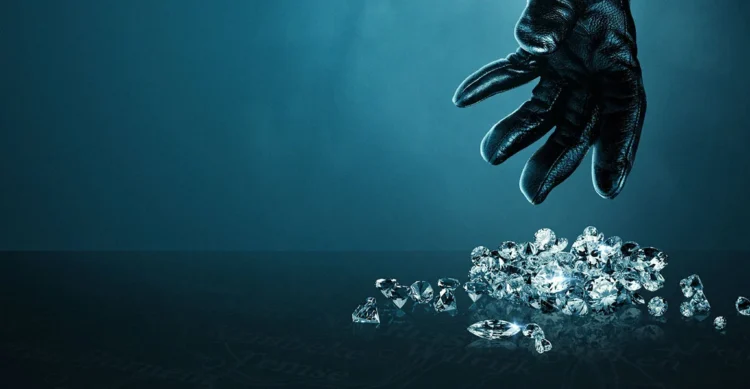The Netflix documentary Stolen: Heist of the Century tackles what is widely regarded as the world’s biggest diamond robbery. What sets it apart from typical true‑crime fare is that the filmmakers actually sit down with the man who directed the caper and let him recount how it unfolded.
Leonardo Notarbartolo – the thief who once rented office space inside the very building he looted – appears on camera for the first time to explain his part in the theft of roughly $100 million worth of gems from Antwerp, Belgium, over the weekend of February 15, 2003. His recollection is selective, and the film balances his story with interviews from police officials who verify, challenge, or refute his claims.
Released on Netflix on August 8, the film is adapted from the 2010 book “Flawless: Inside the Largest Diamond Heist in History.” Co‑author Scott Selby speaks with TIME about the “flawless” nature of the robbery and offers his perspective on Notarbartolo’s version of events.
Antwerp has long been the global hub for diamonds; an estimated 85 % of the world’s stones pass through the city. The thieves set their sights on the Antwerp Diamond Center, a complex that houses dozens of gem‑trading firms. While the premises are heavily guarded on weekdays, security eases over the weekend, giving the criminals a window of opportunity.
According to the documentary, the gang slipped in through the garage, using a modified “alien” key to reach the ground floor. They then disabled the motion detectors with hairspray, covered light sensors with black duct tape, and shrouded CCTV lenses in black plastic bags. After completing the job, they stole the security footage to erase any visual evidence of their intrusion.
The most astonishing feat was breaching the explosion‑proof steel door to the vault. “The biggest mystery for me is how they got past that combination lock,” Selby remarks. Notarbartolo alleges he concealed a camera inside a fire extinguisher to capture the lock’s combination, but Selby points out that the only way to read the numbers is through a small glass “magnifier” atop the lock.
To open each safe‑deposit box, the thieves devised a tool that wedged into the keyhole and, by leveraging the deadbolt, caused the door to pop open. Notarbartolo claims he rehearsed the operation in a replica vault built outside the building. Selby is skeptical, noting that Notarbartolo already possessed a box inside the real vault, making a mock‑up unnecessary.
Nearly all of the stolen diamonds are still missing. Many of the box owners had not insured their gems, trusting the Antwerp Diamond Center’s reputation for security—CCTV, armed guards, and rigorous weekday monitoring. “We must remember the real victims,” Selby emphasizes. “These were small‑business owners whose livelihoods were wiped out.”
Notarbartolo shows no sign of remorse. In the film he says, “I’ve always wanted to be part of something like this,” later adding, “We were proud of achieving something so powerful.” Selby, however, grades the robbery itself as “flawless” but notes that the escape was poorly executed.
Investigators eventually trailed a cache of trash dumped along a forested stretch of highway between Antwerp and Brussels. The rubbish landed on the property of August Van Camp, a local who habitually collected roadside litter and reported any suspicious finds to the police. When Van Camp turned over the bag, officers discovered tiny emeralds, a supermarket receipt, and a note naming Elio D’Onorio, an alarm specialist hired by Notarbartolo. The receipt led detectives to security footage that identified Ferdinando Finotto, a man already suspected in an unrelated robbery.
Further digging revealed that D’Onorio, a Turin native, was linked to the so‑called “School of Turin,” a criminal network known to Belgian authorities. The building’s manager later recognized Notarbartolo in the security videos. Curiously, his own safe‑deposit box was left untouched, raising additional suspicion.
A week after the heist, on February 21, Notarbartolo returned to the site posing as a tenant, hoping to blend in. The security staff, already aware of his name, stopped him at the entrance, stalled him while awaiting police, and ultimately facilitated his arrest. “At that point you surrender,” he tells the documentary. “You have to face the situation.”
Police forced Notarbartolo to lead them to the thieves’ hideout, where they found a carpet strewn with emeralds matching those recovered from the trash. He received a ten‑year prison sentence as the mastermind, while D’Onorio and Finotto each got five years.
Having already served his time, Notarbartolo is free to discuss the crime openly. “There’s no longer any legal jeopardy for him,” Selby explains. “He served his sentence.” He now lives with his wife on a farm near Turin, running a modest wood‑pellet business that supplies fireplaces. Authorities keep a watchful eye on him.
Throughout the documentary, Notarbartolo mentions a man named Alessandro who supposedly commissioned the robbery. Police, however, have found no evidence of such a partner. “I don’t think any outside party hired him,” Selby says.
Although the diamond caper was a sophisticated operation, Selby reminds viewers that everyday security habits can protect ordinary people. “Living in a gated community doesn’t excuse you from having a solid door lock,” he warns. “Don’t become complacent; keep your alarm system active.”























